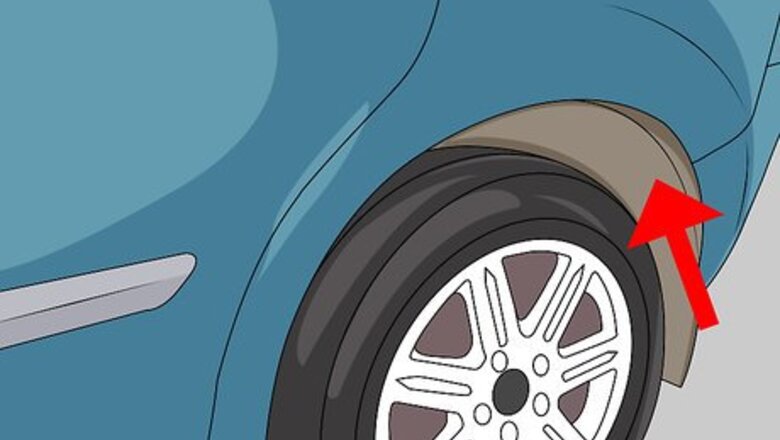
views
Finding Rust Before It Spreads
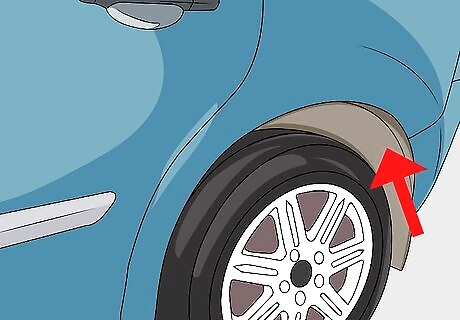
Inspect your wheel wells and bumpers. Your wheel wells are a common trouble spot for rust developing in a vehicle. Because they tend to be dirty and difficult to see clearly, people often neglect to inspect them. Most tire manufacturers recommend that you rotate your tires every 6,000 miles (10,000 km), so as you remove the wheel from your vehicle to rotate it to another wheel well, use a flashlight to check in the well for rust. Check the areas your bumpers attach to the vehicle each time you rotate your tires as well. If there is too much dirt or mud in the wheel well to inspect for rust, use a hose to spray the area out, then check again. Use rotating your tires as a reminder to check your bumpers for rust as well. Older vehicles with metal bumpers sometimes rust faster than the body of the vehicle.
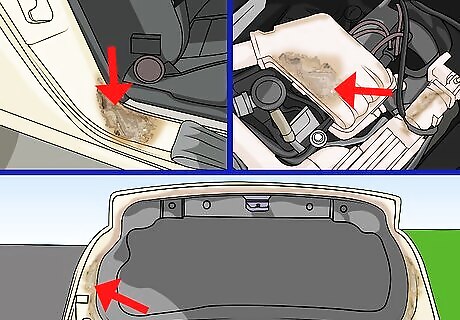
Look for signs of rust where body components meet. Your vehicle is most likely to rust where two pieces of metal meet, particularly if there is the potential for them to rub. Rubbing will wear away the protection provided by the paint, allowing rust to form. Walk around your vehicle and inspect the areas where components meet such as in the door frame, where the hood meets the fenders, and around the trunk. Open the doors, hood and trunk while you inspect your vehicle for rust. Look for signs that the paint is bubbling, as rust may be developing beneath bubbled up paint.

Inspect the bottom of your vehicle regularly. The underside of your car or truck often takes the most punishment, and is therefore more likely to rust. If you live in an area that snows in the winter, salt and other chemicals used to treat snow and ice on the roads may increase the likelihood of rust developing beneath your car. Check beneath your car during oil changes or as you rotate your tires for signs of rust developing. Look beneath your vehicle for rust while changing your oil. Never climb under your vehicle without using jack stands.

Don’t allow water to sit in or on the vehicle. Your vehicle is designed to withstand most things regular weather can throw at it. Paint, clear coats and plastic trim pieces are all intended to protect the metal on your vehicle from rusting, but over time these forms of protection can become compromised. If you notice an area of your car or truck that tends to hold water, such as a truck bed or leaky trunk, make sure to drain it or dry the water out of it. If your trunk leaks and gathers water, there should be drains that allow the water to pour out. If the water does not drain, locate the drain holes by consulting your service manual and remove whatever is blocking them from allowing the water to drain.
Washing Your Vehicle to Prevent Rust

Wash your vehicle regularly. Although dirt does not directly cause rust, dirt and sediment can wear through your paint over time, especially when anyone touches the paint. Other things that can reduce your vehicle’s protection against rust include bird droppings and gasoline that spills when filling the vehicle. Over time, these things wear through wax, clear coat and paint, leaving the metal susceptible to rusting. Wash your vehicle every few weeks so sand and dirt can’t be rubbed through the paint. Bird droppings and gasoline can eat through the paint. Consider washing your vehicle if either comes into contact with the paint.
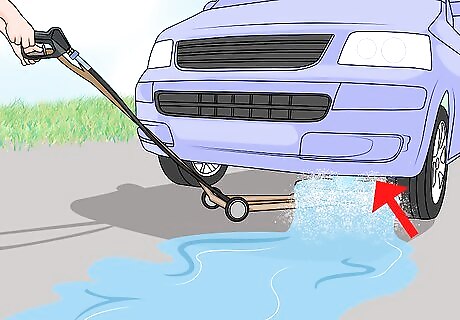
Wash the undercarriage of the vehicle. If you live in an area that snows in the winter, salt and chemical deposits on the underside of your vehicle can compromise its ability to protect against rust. Wash the underside of your vehicle regularly to prevent these materials from sitting on your vehicle for long. Many automatic car washes offer undercarriage cleaning. You may also jack up your car and spray the underside using a hose.

Use baking soda to neutralize road salt. If you often have to deal with road salt, you may choose to add a small amount of baking soda to the soap and water you wash the undercarriage and wheel wells of your vehicle with. A tablespoon of baking soda will neutralize the acidic effect of the salt and other ice melting chemicals used on the roads. Make sure to use baking soda in conjunction with an automotive soap. One tablespoon of baking soda is sufficient to clean the undercarriage of most vehicles.
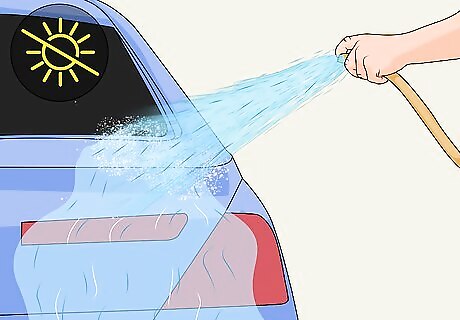
Rinse the vehicle thoroughly. Leaving dried soap on your vehicle can also reduce the lifespan of the paint. Make sure you rinse all of the soap off of your car or truck each time you wash it. Never wash your vehicle in direct sunlight, as it may cause the soap to dry to the paint much faster. You may choose to apply soap to your vehicle in sections, such as the hood, then rinse it completely before moving on to the next portion of the vehicle. Dried soap will also dull the appearance of the paint on your vehicle.

Wax your vehicle at least twice a year. Wax does more than provide your vehicle with a healthy shine, it also protects the paint from fading and damage. Applying a coat of wax to your vehicle twice a year will provide the paint with an extra layer of protection and help reduce the chances of rust forming. Wax repels water and creates another layer of protection for the paint. Wax will also protect your paint from fading in direct sunlight.
Preventing Rust from Spreading
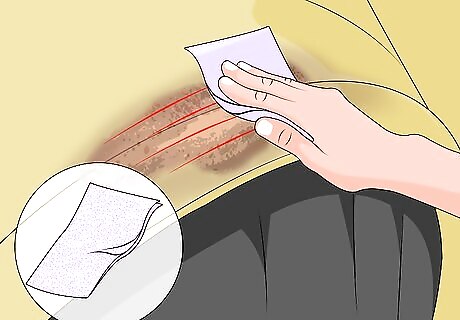
Scrape rust off with a razor blade or fine grit sandpaper. If you locate a rust spot on your vehicle, taking action to prevent it from spreading is your best course of action. Start by scraping the rust off using a razor blade or fine grit sandpaper. Be careful not to damage the paint surrounding the rust spot. Only remove the rust, try to avoid scraping off the paint surrounding it. If the paint is flaking off, it means it is no longer bonded to the metal in that area and will likely fall off anyway. If it is flaking off in a large area, you may need to have that portion of the vehicle repainted completely.
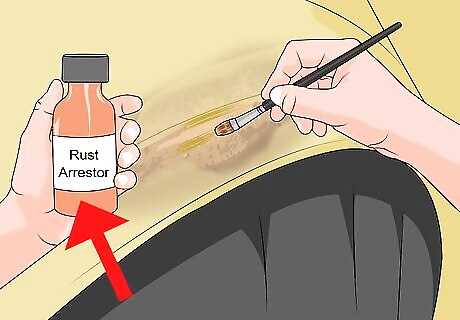
Apply rust arrestor to prevent the further spread of rust. Once you have scraped off the rust, apply an over the counter rust arrestor to the area. This will prevent new rust from forming in the area. Most rust arrestors come with an application brush; dip the brush in the rust arrestor and then apply a thin coat to the area that was previously rusty. If your rust arrestor does not come with an application brush, use a Q-Tip or small rag to apply it to the metal. Do not spray it on. You can purchase rust arrestor at most auto parts stores.

Allow the rust arrestor to dry completely. Depending on the type of rust arrestor you choose and the environment, it may take up to a few hours for the rust arrestor to dry completely. Read the instructions on the bottle to ensure you allow enough time for it to completely cure before moving on to the next step. It may take longer for the rust arrestor to dry in cooler or more humid environments. Rust arrestor will dry faster in direct sunlight.
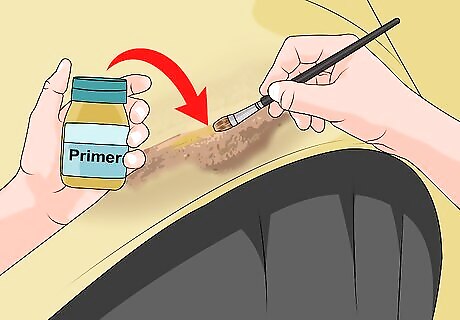
Apply primer over the dried rust arrestor. Use a small applicator brush to apply automotive primer to the area that used to be rusty, over the dried rust arrestor. The coat of primer should be thin but complete, so you can’t see any metal through it. Make sure not to over apply the primer so it begins to drip. Use a paper towel or rag to dab up any excess primer before it has the opportunity to drip. Allow the primer to dry completely before adding automotive paint.
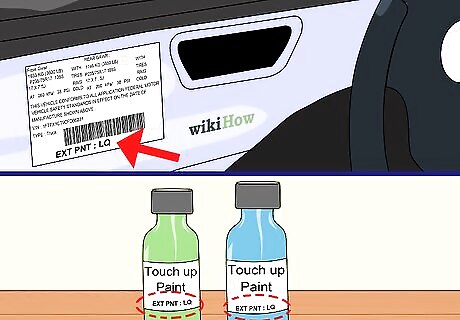
Locate the correct color of automotive paint. You can find the correct shade of touch up paint in a number of ways. Many auto manufacturers can provide you with a bottle of touch up paint based on the VIN number for your car. You may also be able to find the paint code located near the VIN number on the placard inside the driver’s door of many vehicles. Use that paint code to purchase a bottle of automotive touch up paint with a matching code. Be careful to choose paint that is an exact match for the existing paint on your car, otherwise the spot will stand out in direct sunlight. You can purchase automotive touch up paint from most auto parts stores and some dealerships.
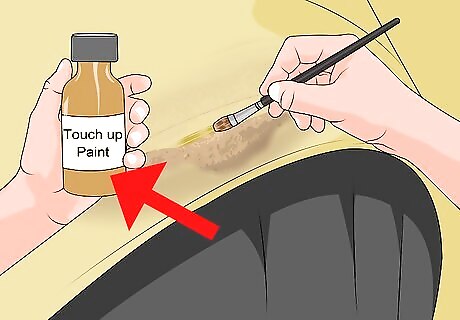
Apply touch up paint over the primer. Dip the applicator brush into the touch up paint, then dab it onto the dried primer. Do not use long strokes or lines may appear in the paint. Dab the paint into the middle of the spot and allow it to spread evenly. Be careful not to apply too much paint so it drips. If the area is larger than a dime, you may also want to wet sand it.
















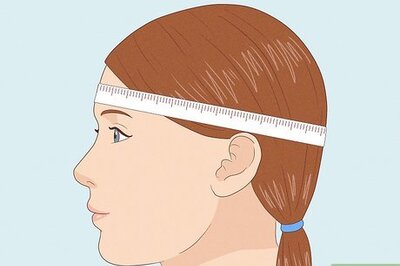

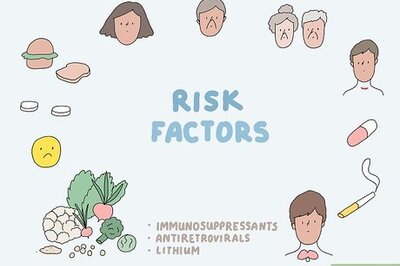
Comments
0 comment